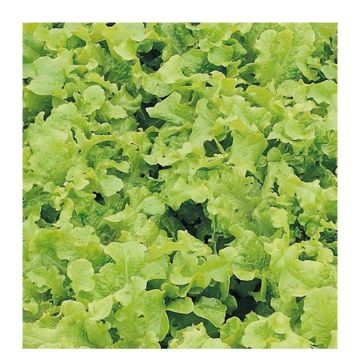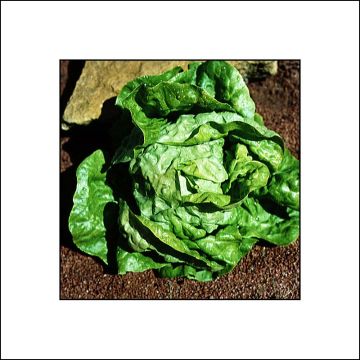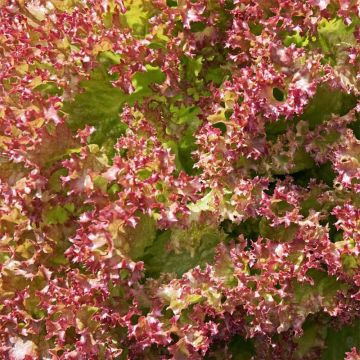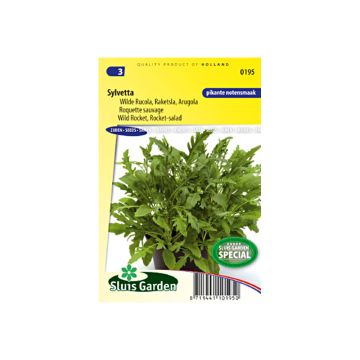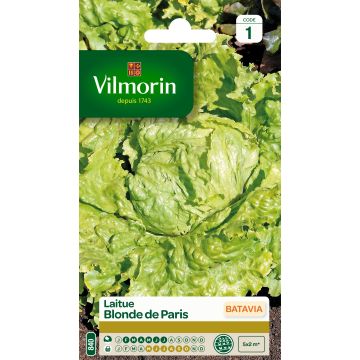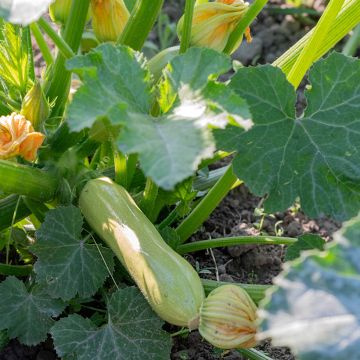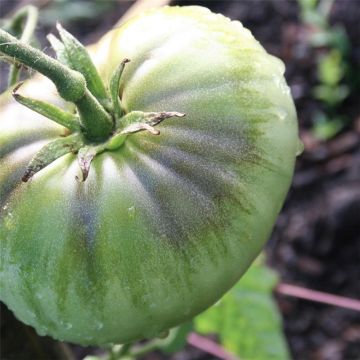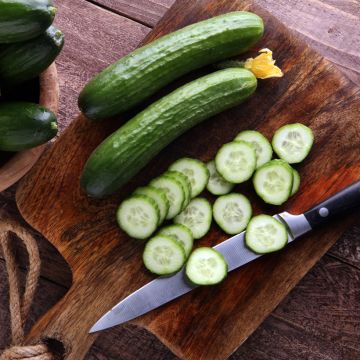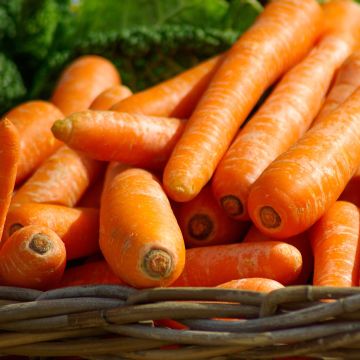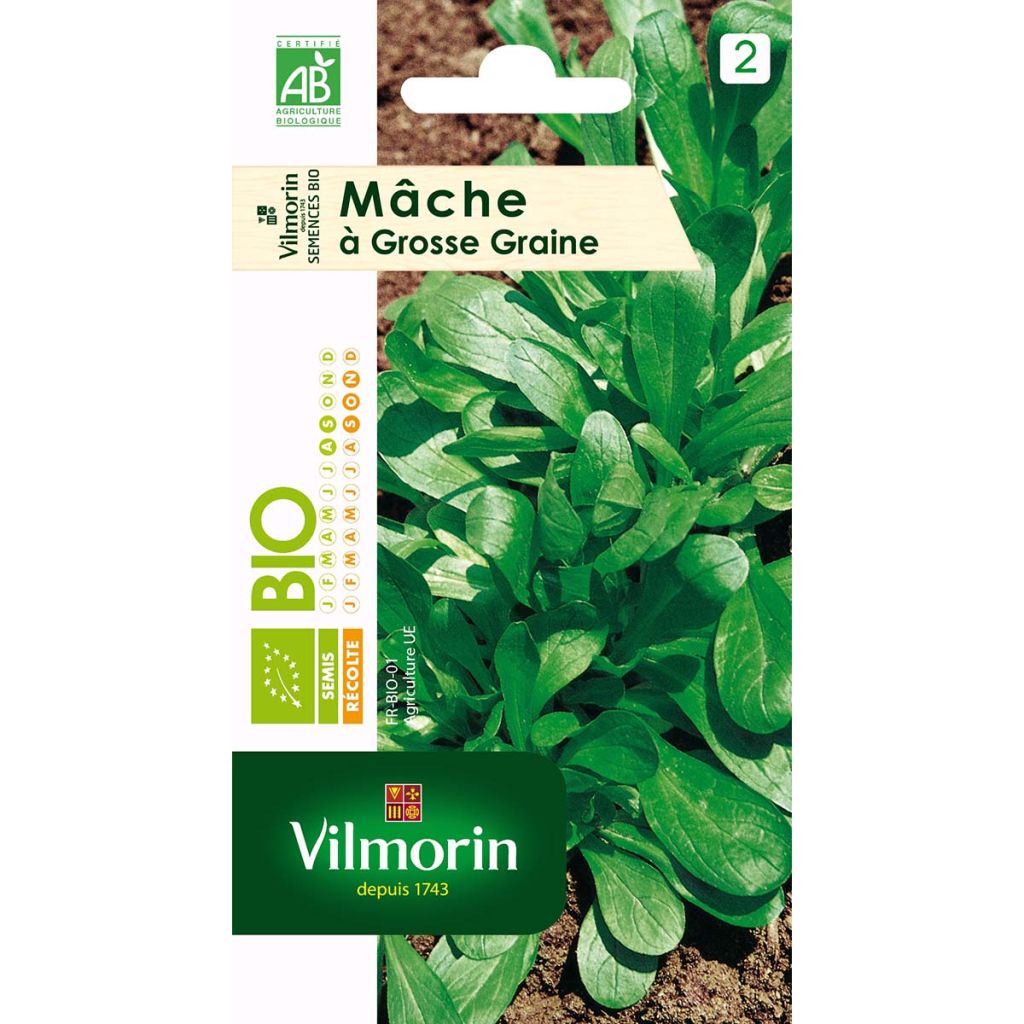

Corn salad Organic Large-Seeded
Corn salad Organic Large-Seeded
Valerianella locusta Grosse Graine
Corn salad, lamb's lettuce
No news" or "Nothing to report
Pascal GUIHOT, 21/08/2016
Why not try an alternative variety in stock?
View all →This plant carries a 6 months recovery warranty
More information
We guarantee the quality of our plants for a full growing cycle, and will replace at our expense any plant that fails to recover under normal climatic and planting conditions.
Seed-only orders are dispatched by sealed envelope. The delivery charge for seed-only orders is €3.90.
Description
Valerianella locusta Large Seeds is an early variety of lamb's lettuce that produces long, tasty, slightly flattened green leaves. It is a generous lettuce, ideal for autumn salads. It is sown in August and September for a harvest from September to November.
Lamb's lettuce, also known as corn salad, is a small salad vegetable with rounded leaves grouped in rosettes. It is THE salad vegetable for autumn and winter, although some varieties known as "all-season" can be sown and harvested throughout the year. Varieties with big seeds have larger leaves but are less cold-resistant than those with small seeds.
Lamb's lettuce belongs to the Caprifoliaceae family (like honeysuckle) and grows wild throughout Europe, to the point that it is sometimes considered a "weed".
It is mainly consumed raw, on its own or accompanied, for example, by kiwi and avocado or beetroot. It can also be cooked, like spinach. Its nutritional value is remarkable - it is low in calories but particularly rich in vitamin C (three times more than lettuce), vitamin E, and beta-carotene.
Growing lamb's lettuce is easy, but the seeds must be sown in firm soil. It is also important to ensure that the soil remains moist.
Harvest: cut the rosette just above the collar using a knife. Harvest as needed.
Storage: It can be stored for a few days in the vegetable compartment of the refrigerator.
Gardener's tip: let some rosettes go to seed in spring. They will self-seed and provide you with more greenery on your plate without any cost or effort.
Report an error about the product description
Harvest
Plant habit
Foliage
Botanical data
Valerianella
locusta
Grosse Graine
Caprifoliaceae
Corn salad, lamb's lettuce
Cultivar or hybrid
Annual
Other Salad leaf seeds
Planting and care
Sowing
Germination occurs at a temperature of about 14°C (57.2°F). The emergence of seedlings takes around 10 days.
Sow in August/September for a harvest from September to November.
Rake the soil (but do not dig) and ensure it is still firm. Make furrows spaced 15 to 20cm (6 to 8in) apart, with a depth of 1cm. Sow in rows, spacing the seeds 0.5 to 1cm apart, cover with a little fine soil, and press down the seeds with the back of the rake. Keep the soil moist during the emergence period. Lamb's lettuce prefers to be sown in shade or partial shade. If that's not possible, cover your seeds with a light mulch, such as a very thin layer of grass, to maintain good moisture until the autumn rains arrive.
Sowing can also be done by broadcasting, at a rate of 5 to 7g (12g for varieties with large seeds) per 10m².
Cultivation
Lamb's lettuce is not demanding and does not require any prior fertilisation. Varieties intended for winter cultivation are hardy, but only to a certain extent. During severe winters, protect them from freezing temperatures by covering them with a winter veil or a layer of straw.
It grows very well in a cold greenhouse or under a polytunnel.
Lamb's lettuce is an excellent companion plant. You can sow it at the base of many vegetables and interplant it between rows of endive, spinach, and radishes.
Seedlings
Care
Intended location
-
, onOrder confirmed
Reply from on Promesse de fleurs
Vegetable seeds
Haven't found what you were looking for?
Hardiness is the lowest winter temperature a plant can endure without suffering serious damage or even dying. However, hardiness is affected by location (a sheltered area, such as a patio), protection (winter cover) and soil type (hardiness is improved by well-drained soil).

Photo Sharing Terms & Conditions
In order to encourage gardeners to interact and share their experiences, Promesse de fleurs offers various media enabling content to be uploaded onto its Site - in particular via the ‘Photo sharing’ module.
The User agrees to refrain from:
- Posting any content that is illegal, prejudicial, insulting, racist, inciteful to hatred, revisionist, contrary to public decency, that infringes on privacy or on the privacy rights of third parties, in particular the publicity rights of persons and goods, intellectual property rights, or the right to privacy.
- Submitting content on behalf of a third party;
- Impersonate the identity of a third party and/or publish any personal information about a third party;
In general, the User undertakes to refrain from any unethical behaviour.
All Content (in particular text, comments, files, images, photos, videos, creative works, etc.), which may be subject to property or intellectual property rights, image or other private rights, shall remain the property of the User, subject to the limited rights granted by the terms of the licence granted by Promesse de fleurs as stated below. Users are at liberty to publish or not to publish such Content on the Site, notably via the ‘Photo Sharing’ facility, and accept that this Content shall be made public and freely accessible, notably on the Internet.
Users further acknowledge, undertake to have ,and guarantee that they hold all necessary rights and permissions to publish such material on the Site, in particular with regard to the legislation in force pertaining to any privacy, property, intellectual property, image, or contractual rights, or rights of any other nature. By publishing such Content on the Site, Users acknowledge accepting full liability as publishers of the Content within the meaning of the law, and grant Promesse de fleurs, free of charge, an inclusive, worldwide licence for the said Content for the entire duration of its publication, including all reproduction, representation, up/downloading, displaying, performing, transmission, and storage rights.
Users also grant permission for their name to be linked to the Content and accept that this link may not always be made available.
By engaging in posting material, Users consent to their Content becoming automatically accessible on the Internet, in particular on other sites and/or blogs and/or web pages of the Promesse de fleurs site, including in particular social pages and the Promesse de fleurs catalogue.
Users may secure the removal of entrusted content free of charge by issuing a simple request via our contact form.
The flowering period indicated on our website applies to countries and regions located in USDA zone 8 (France, the United Kingdom, Ireland, the Netherlands, etc.)
It will vary according to where you live:
- In zones 9 to 10 (Italy, Spain, Greece, etc.), flowering will occur about 2 to 4 weeks earlier.
- In zones 6 to 7 (Germany, Poland, Slovenia, and lower mountainous regions), flowering will be delayed by 2 to 3 weeks.
- In zone 5 (Central Europe, Scandinavia), blooming will be delayed by 3 to 5 weeks.
In temperate climates, pruning of spring-flowering shrubs (forsythia, spireas, etc.) should be done just after flowering.
Pruning of summer-flowering shrubs (Indian Lilac, Perovskia, etc.) can be done in winter or spring.
In cold regions as well as with frost-sensitive plants, avoid pruning too early when severe frosts may still occur.
The planting period indicated on our website applies to countries and regions located in USDA zone 8 (France, United Kingdom, Ireland, Netherlands).
It will vary according to where you live:
- In Mediterranean zones (Marseille, Madrid, Milan, etc.), autumn and winter are the best planting periods.
- In continental zones (Strasbourg, Munich, Vienna, etc.), delay planting by 2 to 3 weeks in spring and bring it forward by 2 to 4 weeks in autumn.
- In mountainous regions (the Alps, Pyrenees, Carpathians, etc.), it is best to plant in late spring (May-June) or late summer (August-September).
The harvesting period indicated on our website applies to countries and regions in USDA zone 8 (France, England, Ireland, the Netherlands).
In colder areas (Scandinavia, Poland, Austria...) fruit and vegetable harvests are likely to be delayed by 3-4 weeks.
In warmer areas (Italy, Spain, Greece, etc.), harvesting will probably take place earlier, depending on weather conditions.
The sowing periods indicated on our website apply to countries and regions within USDA Zone 8 (France, UK, Ireland, Netherlands).
In colder areas (Scandinavia, Poland, Austria...), delay any outdoor sowing by 3-4 weeks, or sow under glass.
In warmer climes (Italy, Spain, Greece, etc.), bring outdoor sowing forward by a few weeks.




































